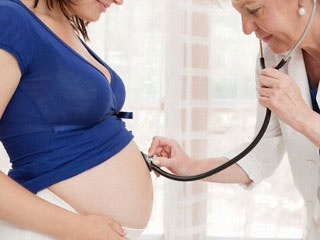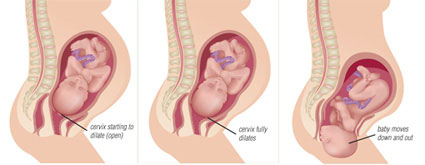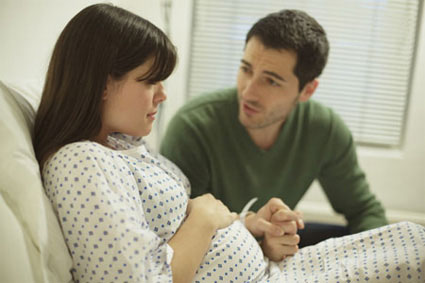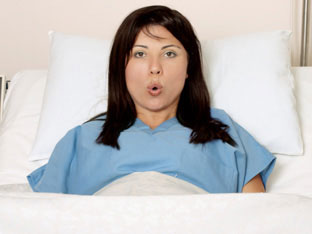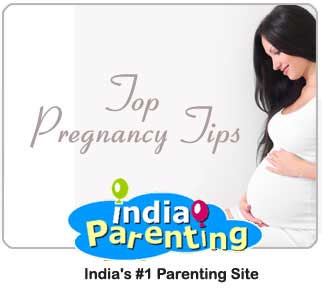The third stage of labour is the final stage of labour. Read on to find out what happens during this stage of labour and delivery.Summary - The advanced stage of labour
The third phase is probably the most demanding, intense and exhausting phase, mentally and physically. This is called the transitional or active phase, where the contractions come 2 or 3 minutes apart and last between 60 - 90 seconds. The cervix has to dilate by another 3 cms and this can take place anywhere from 15 minutes to an hour. At this point you will find it difficult to relax between the contractions.
You will most likely feel a strong pressure in the lower back or perineum and your legs will tremble and cramp. You could experience nausea, vomiting and may break out in a cold sweat. You may feel chilly or experience hot flushes. Rectal pressure increases, but there is no urge to push and the bloody flow from the vagina will definitely get messy. You will be totally exhausted.
If you feel the urge to push, and your cervix is not fully dilated to 10 cms, it is better to pant and blow instead. Use your
breathing techniques and try to relax between contractions. By the end of this phase, your cervix will be fully dilated and you will begin to push your baby out.
What happens in the third stage of labour?
The third stage of labour beings when the baby is delivered. During the last and final stage of
childbirth, the placenta, which has acted as your baby's life support system until now, will be delivered. It could take about 5 minutes to half an hour, in which time you will be expected to help expel the placenta by pushing when directed. You might experience mild contractions of about 60 seconds as the uterus squeezes out the placenta from the uterine wall and moves it down so that you can push it out.
How is third staged managed by doctors?
Your third stage can also be managed by your doctors by giving you an injection which will help your womb to contract and squeeze out the placenta. In this case pushing may not be required as the placenta is already detached and is pulled out by the doctor. This process helps to reduce the risk of heavy bleeding but the side effects like nausea, vomiting and high blood pressure can be triggered.
All women can opt for this method but it is strongly recommended if the risk of heavy bleeding is very high. If everything is normal and delivery takes place smoothly, women can also opt for
natural delivery of placenta without using any drugs.
What happens after the delivery of placenta?
Your doctor will check if the placenta is delivered completely and there are no remains of it inside your uterus. He will also check if your uterus is contracting progressively. Once it is delivered, your doctor might need to take care of any tears or lacerations that have happened during delivery or stitch up an episiotomy. You will be kept under observation in order to check if there is no heavy bleeding and everything is going fine.
What will I experience after this stage ends?
Some women experience chills and waves of hunger and thirst. You will get a heavy, bloody, vaginal discharge (lochia) like a menstrual flow. The worst is over. You now have your baby in your arms. A completely new journey of parenting begins now. So, be ready to enjoy those wonderful moments with your little bundle of joy and take pride in your accomplishment.

















